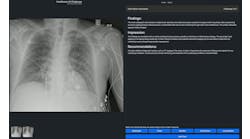Innovator Awards: Second-Place Winning Team: Gundersen Health: Analytics for Patient Engagement the Gundersen Health Way
Patient care organizations have a hard time keeping up with ever-changing patient panels. Patients move out of the local service area or change providers due to insurance; and the continuous ebb and flow of patients makes it difficult to determine which patients are still active for providers. At the eight-hospital, 38-clinic, 9,300-employee LaCrosse, Wisconsin-based Gundersen Health System, leaders decided to do something about that perpetual problem. Historically, Gundersen’s primary care departments had used automated letters and patient messages through their patient portal in the electronic health record (EHR) system in order to reach out to patients and families and to ascertain their current connection to the health system; but that form of communication has often proven to be unidirectional and ineffective.
So a team led by Rajiv Naik, M.D., medical director of informatics, and co-managed by Rik Kansteiner, innovations partnership partner, went to work to figure out how to solve that problem. And in the process, by leveraging artificial intelligence (AI), the Gundersen leaders built the foundation for an analytics infrastructure that will help them to define and analyze the populations that are at risk for poor outcomes because of care gaps and lack of engagement with providers. For their important work, the editors of Healthcare Innovation have named the Gundersen Health System team the second place-winning team in the 2022 Innovator Awards Program.
Starting at the start: physicians’ patient panels
The initiative began as so many do, to address a set of needs. In order to improve the overall health of the communities that they serve, Gundersen leaders wanted to better understand their patient population and gain insight regarding patients who were not coming in for recommended regular provider visits. As of mid-2021, as many as 10 percent of patients on primary care panels had not seen their primary care clinician within the last two years. In order to get more patients to visit their primary care clinicians regularly, the leaders needed to first understand which individuals were still active patients, and which were no longer part of their physicians’ patient panels. For those patients identified as active, they wanted to find a way to re-engage those patients in order to close care gaps and improve population health management.
Gundersen had already had in place an analytics contract with the Columbus, Ohio-based analytics company Olive, and Dr. Naik turned to the team at Olive to ask them to help him design, automate, and scale Gundersen’s patient panel management and patient engagement efforts. Olive brought the capability and expertise to sort, categorize, and connect with patients using conversational text messaging.
Gundersen and Olive worked together on an evidence-based algorithm to group patients by demographics and historical engagement levels. The algorithm classified patients overdue for wellness care so they could be engaged via two-way text (SMS) messaging. The outreach asked the patients to confirm their patient status with Gundersen and their PCP. If the patient no longer identified as a Gundersen patient or met the historical non-engagement threshold for depanelment, Olive inactivates the patient from the panel through an automated action in the EHR. If they identify as a Gundersen patient, they are encouraged to make an appointment for wellness care.
Next up was testing. Gundersen leaders started with a small-scale pilot involving approximately 15 percent of the health system’s primary care providers (among the 300 providers practicing in the health system’s 38 clinics, 70 percent are physicians while 30 percent are nurse practitioners and physician assistants).
At first, each time a list of target patients was tested, some patients appeared that had actually been in for a recent visit of a different type. That visit type was then added to the report. After a few iterations, misclassified patients fell until Gundersen and Olive leaders felt comfortable that they had caught the edge cases. Gundersen’s leaders stress that is an important decision to remove a patient from a panel: once removed, they miss out on communications and the streamlined care they get from Gundersen clinicians. Olive used many data quality checks throughout the automation, on both data provided from Gundersen and data returned to the EHR. A high degree of accuracy was important to build credibility with the physicians, so that they trusted Olive’s automation with their panels. The automation continues on a weekly basis, evaluating all new visits against the engagement algorithm, and outreaching to patients and automatically removing some from the panel. And, going forward, Gundersen leaders will be leveraging this platform for patient engagement, particularly around chronic illness. Indeed, Gundersen leaders report, they are already starting to see improvements in their quality metrics. Their diabetes control metrics improved by 7 percent, childhood immunization rates have improved by 11 percent, and colorectal cancer screening improved too, as a result of more accurate panel profiles and the engagement of patients who were overdue for care. And ten percent of overdue patients have scheduled or completed regular primary care visits after receiving an Olive text message.
What has been the conceptual driving force involved in this work? One of the things learned early on, Dr. Naik says, was the huge difference between active patients and those whose families might have moved away or chosen other providers, yet were still individuals for whom Gundersen was responsible when it came to quality metrics on which basis they were being paid. “Let’s say that you had 1,000 patients, and 100 of them had changed insurance or moved away,” he says. “Those patients won’t be counted as being up to date on their hemoglobin a1c scores or a range of other types of quality reports that we’ll be measured on, because they’re no longer engaging in care with us as an organization; yet they’re still counted in our data set.” Naik says he discovered in earlier research that had been grant-funded in this area that “We were working with two types of reports, one type involving patients recorded as having had at least one visit with one of our providers within the past two years, versus patients counted in daily reporting based on being registered to a primary care physician. At baseline, there was a 15-20-percent difference between those data sets—which told us that probably 15 percent of patients attributed to us are no longer on our panels.”
Even the process of manually cleaning up those patient lists in the Department of Pediatrics led to that discrepancy between the two data sets shrinking to 2 percent in just a few months of that manual work. “But,” Naik reports, “over the long term, we’ve already reengaged 10 percent of the population who are responding to the messages, and in just over two months, 4 percent had already completed an appointment.” In other words, by doing that data work and leveraging the data, Naik and the team were able to lay the foundation for improved engagement. “Next,” he says, “we want to engage those patients and families who tell us that, ‘Yes, we’re Gundersen patients,’ but who haven’t scheduled appointments yet. We want to find out, if they say they’re still Gundersen patients, why they’re not making appointments and engaging with us. Do they have higher social determinants of health? Are they coming from an area with more difficult access? Are they coming from our more urban, or more rural, populations? The next phase will be analyzing the data in order to understand those populations.”
One absolutely key element, Kansteiner notes, has been that the analytics work could not put any burden on the clinics and their staffs. “Part of Dr. Naik’s design is that there’s little if any lift in the clinics for this; this runs in the background,” he says. “There’s no day-to-day management involved at the clinic level, which was a huge sell. The other piece was having a proactive partner in Olive; the Olive engine made this work. We couldn’t have done this on our own.” Further, he notes, “One element in our partnership agreement with Olive is that, per any technical advances that are co-created, we keep a financial stake in them, while Olive can market it and sell it to other organizations; we’ve already begun doing that.”
Naik notes that “We’re not getting money from Olive; we’re getting credit and are getting more value in our agreement with Olive. But they’re developing their own text messaging platform, and the algorithm will now be configurable, so that they can make specific tweaks fairly easily” as the application is configured for other patient care organizations—and that makes the technological innovation highly replicable.
Meanwhile, Naik says, “Any healthcare information technology that’s deployed without connecting it to the people and processes, will always fall short of the desired impact, either because the changes won’t be perceived well or the people won’t be trained.” He credits Kansteiner with helping to lead the change management aspects of the initiative, and says that, “Broadly speaking, what’s really important is to make sure that technology is not deployed without connecting it to the people and processes involved. Early on, we engaged subject matters experts in each clinical area involved: population health, pediatrics, internal medicine, and family medicine. And we began small, starting out with a pilot involving just five clinics.” Some adjustments had to be made after the first pilot had gone live, he reports, which meant that “We didn’t have all the visit types we needed with the first rollout, so we had to put the depaneled patients back in and work it out. Had we not had the follow-up plan in place, we would have lost support. So having a pilot group, and then scaling up—and we actually scaled up in three phases—is very important.”
“For me,” Kansteiner adds, “the big piece of this was to start small, get a win you can show, and learn. That, and the roadshow that Dr. Naik did, were probably the biggest pieces.”
“This was a great opportunity to solve a problem that hadn’t been attacked this way before, to not only make it more accurate, to understand whom we’re taking care of, but also to really provide a foundation to build on, to engage patients who were at risk for adverse outcomes, and those who are within our system but not engaging in their care in the way that we ideally hoped they would,” Naik concludes.


